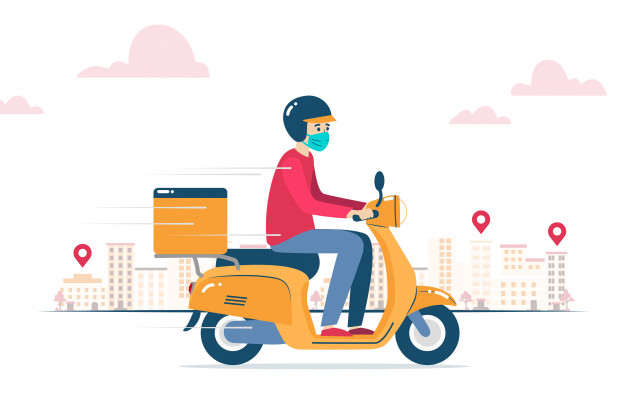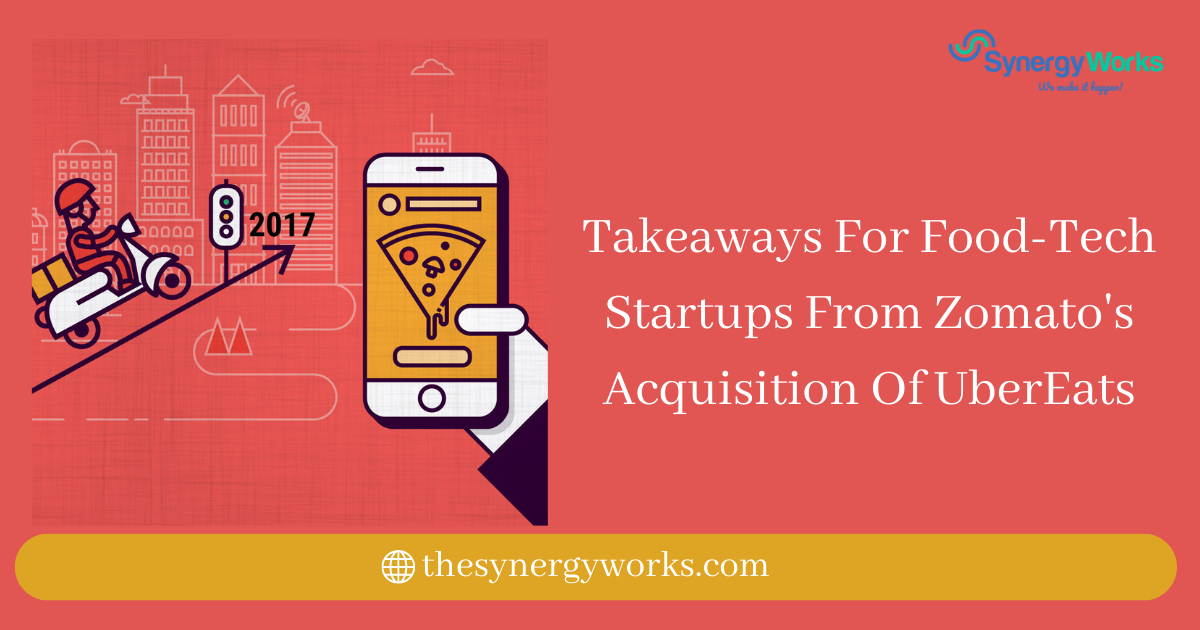
Last week, the startup world was stunned when Zomato acquired Uber Eats India for $350 Mn. Since then everybody has been debating over the internet about who benefited from the deal. In the food delivery business market, the Indian food startup Zomato and Uber’s UberEats have been the top rivalries, of course, there is Swiggy too but this blog is not about Swiggy. There are endless comparative analysis studies and surveys that compare both and offer business insights that entrepreneurs can utilize to step into the food-delivery business. That said, the recent merger has ended the competition between the two, at least in India. So, in this blog, we will cover all the prominent details of this acquisition and also offer takeaways for food-delivery businesses to drive growth.
Inside Story of The Zomato & UberEats Merger
Understanding the fact that UberEats in India was not contributing anything substantial to Uber’s global business, the ride-hailing giant decided to sell its Indian food operations to the leading Indian food-tech startup Zomato. The buy-out cost Zomato a whopping $350 Mn that has been widely accepted as the onset of Indian food-tech market consolidation. While Zomato and Swiggy dominate the food delivery landscape, UberEats held a good 12% of the food-tech market.
What It Holds For Zomato?
Acquiring UberEats means getting access to UberEats’ customer information, delivery partners, business details, order history, etc. When users try to order food via UberEats, they will be redirected to Zomato. However, this process will be followed for the coming six months. All these benefits are secondary while the first one being, Zomato becoming the pioneer of the food-tech market.
How Uber Got Benefited?
Well, first, Uber gets a 9.99% stake in Zomato. Not to mention, the global taxi-hailing pioneer has increased its annual savings by minimizing its losses. According to reports, UberEats India contributed only 5% of the global food delivery bookings and the losses accounted for one-fourth of the global figure.
Takeaways For Other Food-Tech Players
Life is too short to commit all the mistakes yourself in order to learn important lessons. That said, food-tech startups can learn from both Zomato and UberEats so as to sustain in the rapidly consolidating market.
Takeaway #1: Partnering With Local Brands
At some point, global or not, every business needs local brand partnerships in an effort to win the customers’ trust. These long-term partnerships lead to continuous enhancement of services while adding value to both parties. This is the biggest takeaway as UberEats primarily lost because of no local partnerships. Having said that, it has still managed to come out as a winner in this merger by holding a 9.9% stake.
Takeaway #2: Usability Design Matters
UberEats will redirect its users to Zomato and only they can understand how annoying it will be to move from an almost perfect UX design to a less user-friendly design. Uber offers simple, clean, and seamless user experience which should be followed as a standard design rule in every mobile application, especially food-tech that can be used by all kinds of people who
Takeaway #3: Focus On Sustainable Business Strategies
Food delivery startups normally fall into the discount strategy to lure new customers. Such short-term strategies never get loyal customers. Understanding the challenges of the food-delivery market, food-tech startups need to frame strategies that keep customer experience at heart.
Takeaway #4: Manage Pace & Step Back When Required
Taking a step back does not mean leaving the arena but preparing for the next move with better planning. Startups need to understand the value of getting off the horse and taking a break. Such breaks enable teams to re-prioritize business objectives and adopt a data-driven approach on the basis of data analytics.
So, what’s in there for food-tech startups?
The recent events might have made Zomato and Swiggy the two leading competitors in the food delivery business but that does not mean that the other food-tech startups have lost. If anything, it is their golden chance to get noticed. Food-tech businesses must pay attention to building business strategies that make the most out of the current scenario. The Synergy Works team has a few suggestions that can help you get noticed in the noisy food market right now.
Work On The Product Usability
Is your product easy to use for new users? Is it easy to navigate? Are the features easy to locate? Is their familiarity in design? And all other things that define a highly usable interface. For higher conversion rates, usability plays a significant role. If your application or website is taking too long for users to complete tasks and achieve goals, then you are losing your potential customers to your competition. Having said that, usability testing can help in avoiding such UX issues and offer the best digital experience.
The Last-Mile Delivery
Nothing is more annoying than late food deliveries without any prior information. For efficient and on-time deliveries in the food business, you must consider various aspects such as auto-assignment of orders, route optimization, geofencing, etc. Additionally, your product must have features like real-time tracking, chat support, notifications, etc. to keep the customer informed about their order status. Most of the food delivery businesses fail due to inefficient delivery management software that works on the backend. We help such businesses identify the problem areas and build robust food delivery solutions.
Customer Experience Is The Key
Every business needs to value and empower its customers to succeed and survive in the cut-throat competition. Customers have more choices than ever and they choose convenience above anything else. Food-tech startups must ensure to gratify the needs of their customers through an application that is effortless to use and food that is amazing to eat.
Join Hands With Local Partners
Local partnerships can prove beneficial in reaching out to more customers in different regions due to the established reputation of the partners. Partnerships can help you understand the local market better to frame relevant business methodologies that can result in higher conversion rates.
Choose Performance Marketing
Performance marketing helps you measure the marketing campaigns and understand the users and their interaction with your website or application in a better way. With business insights, you can make informed decisions and create marketing campaigns that sell and make your business stand out.
Also Read Uber like App Development Company
Final Takeaway
Online food ordering applications will stay, no matter what because individuals have become too comfortable in eating while streaming their favorite online shows. That said, these users, that include me too, are not up for bad experiences, both food and delivery. Millenials are always eager to explore new options that can make their lives simpler and better. So, if your food-tech startup has the capability to transform lives for better and offer something that the said leaders; Zomato and Swiggy, are not offering, then WHAT ARE YOU WAITING FOR?
Get in touch with our consultants to know more.
About Author
Shikha Taman
Shikha Taman is the founder & CEO of SynergyWorks Solutions. With over 12 years of experience in the industry. She has extensive knowledge of software engineering, project management, client management, and business strategy. She strives to ensure all the products developed are always up-to-date with materializing technologies to remain competitive in today’s marketplace.




